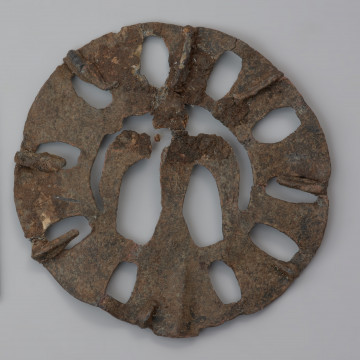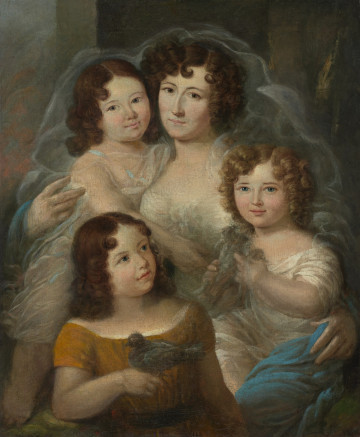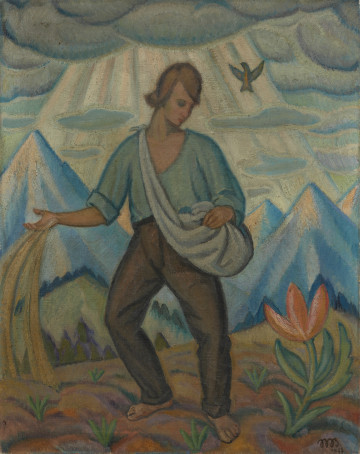
Openwork badge with bird
1200 — 1225
National Museum in Szczecin
Part of the collection: European classics of modernity
Around 1910 Neoclassical tendencies in art became increasingly strong. They became evident, among other things, in the pages of the Polish-French magazine Museion, where Wacław Borowski served as artistic director. After the First World War asylum in Switzerland and armed participation in the Polish-Soviet conflict, the painter settled in Warsaw in 1922. At that time, he joined the ranks of the most popular circle of pro-state artists, the Association of Polish Artists Rytm. Combining modernist proposals with native ethnography and international impulses under the banner of rappel à l'ordre perfectly matched the group's programme and the needs of representing the young state. Borowski took part in the Venice Biennale (1920, 1930, 1932) and the Paris International Exhibitions (1925, 1937). He also created scenes of power and modern iconography of everyday life, decorating government interiors and drawing designs for banknotes, stationery, and illustrations for Marian Falski's most popular Polish Elementarz [The Primer] (1934). Everywhere there appeared bucolic genre scenes, allegories of family or professions, maintained in tapestry and fresco colours in the type of Sielanka [The Idyll] from the Szczecin collection. The painting seems to be a hymn to boyhood: a naked young child, a youth in a loose shirt, and a junior in a peasant shirt and trousers are depicted against the background of a Flemish verdure. The figures are accompanied by birds and a lamb, which have been an integral part of pastoral scenes since Roman times. Immersion in the history of art, a feature of Borowski's painting for a long time, took on an escapist character during the economic crisis. Drawing on the models of the old masters was particularly characteristic of the Warsaw community centered around the School of Fine Arts (from 1932 the Academy of Fine Arts). Between 1927 and 1933, Borowski held the position of professor at the Warsaw Institute of Fine Arts, i.e. a semi-university school founded by the artists of Rytm that prepared candidates for academic studies.
Szymon Piotr Kubiak
Author / creator
Dimensions
cały obiekt: height: 138 cm, width: 97 cm
Object type
painting
Creation time / dating
Creation / finding place
Identification number
Location / status

1200 — 1225
National Museum in Szczecin

około 1825
National Museum in Szczecin

1923
National Museum in Szczecin
DISCOVER this TOPIC
National Museum in Szczecin
DISCOVER this PATH
Educational path